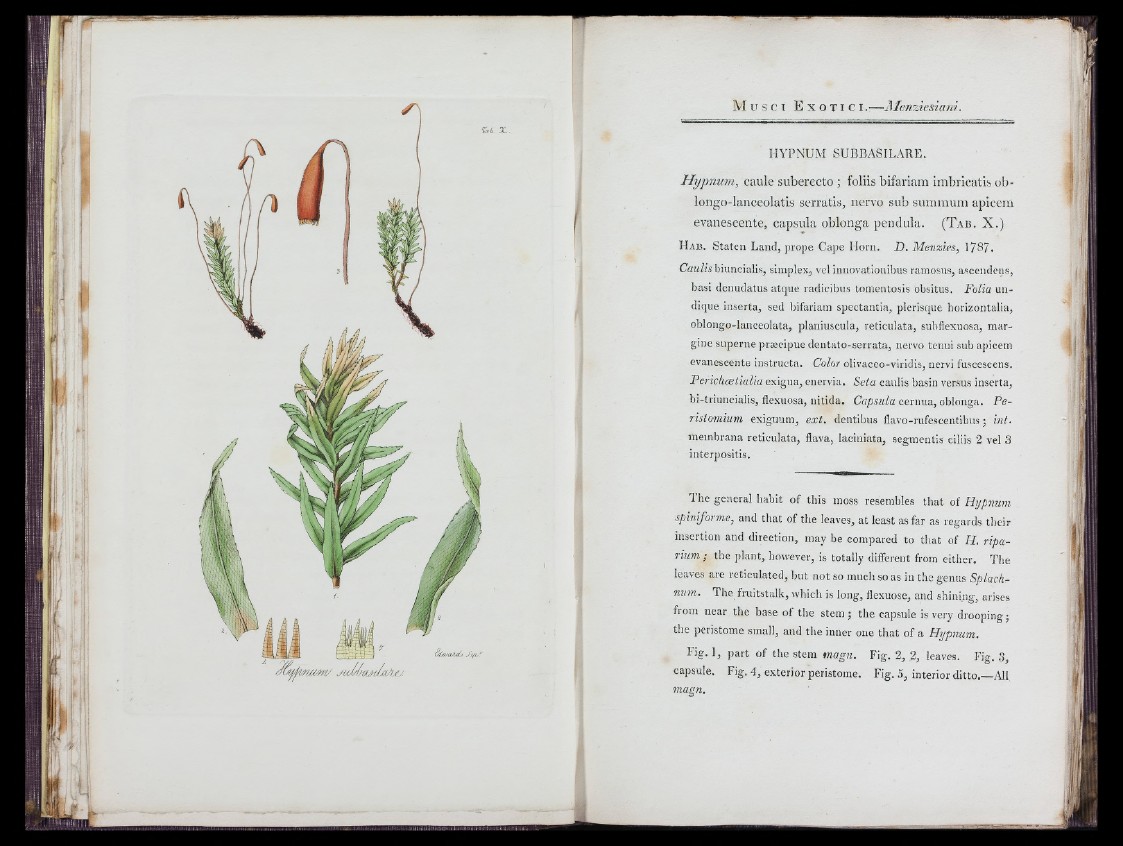
i l
r»i X,
m J Á juíJaM
S/moAaCí Sr/iyA
HYPNUM SUBBASILARE.
H y p iw m , caule su b e re c to ; foliis b ifa riam im b ric a tis ob-
lo n g o -lan c eo la tis s e rra tis, nervo sub sum m um apic em
ev an e sc en te , c ap su la o b lo n g a p e n d u la . ( T a b . X .)
H a b . Staten Land, prope Cape Morn. D. Menzies, 1787.
Caz/íi biuncialis, simplex, vcl innovationibus ramosns, ascendens,
basi deiiLidatus atcpe radicibus tomentosis obsitus. Folia undique
inserta, sed bifariam spectantia, plerisque horizontalia,
oblongo-lanceolata, planiuscula, reticulata, subfiexuosn, margine
superne prsecipue dentato-serrata, nervo tenui sub apicem
evanescente instructa. Color olivaceo-viridis, nervi fuscescens.
FerichcBiìalìa exigua, enervia. Seta caulis basin versus inserta,
bi-triuncialis, flexuosa, nitida. Capsula cernua, oblonga. Peristomium
exiguum, ext. dentibus flavo-rufescentibus ; i?il.
membrana reticulata, flava, laciniata, segmentis ciliis 2 vel 3
interpositis.
The general habit of this moss resembles that of Ihjpnum
spin'iforme, and that of the leaves, at least as far as regards their
insertion and direction, may be compared to that of H. ripa-
rhim ; the plant, however, is totally different from either. The
leaves are reticulated, but not so much so as in the genus Splach-
imm. The fruitstalk, which is long, flexuose, and shining, arises
from near the base of the stem; the capsule is very drooping;
the peristome small, and the inner one that of a Phjptium.
Fig. 1, part of the stem magn. Fig. 2, 2, leaves. Fig. 3,
capsule. Fig. 4, exterior peristome. Fig. 5, interior ditto.—All
magn.
»